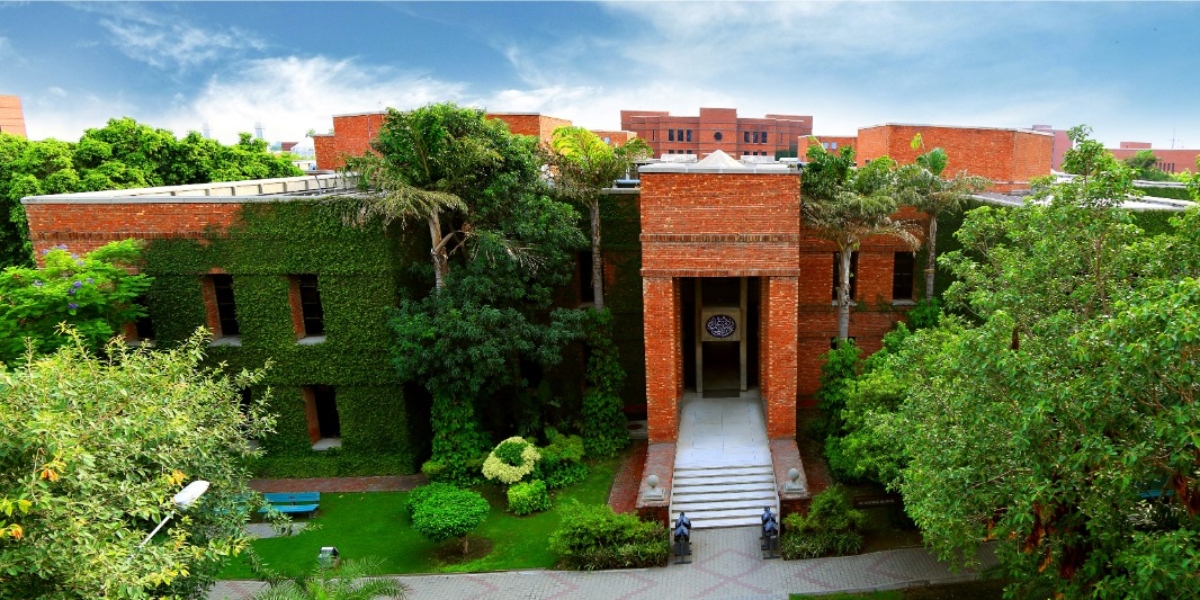LUMS established its Health and Safety Committee in June 2020 at the height of the pandemic in Pakistan in order to consider ways for the reopening of the campus if and when conditions permitted. Throughout its deliberations, the committee was led by health specialists including Dr. Samia Altaf, an internationally recognised public health physician who has now joined LUMS as Director of Campus Health and Safety; and Dr. Shaper Mirza who is an Associate Professor at the School of Science and Engineering, LUMS and specialises in epidemiology, immunology and bacterial pathogenesis. She was also involved with the team that advised the Government of Punjab on the smart lockdown strategy in Lahore. The Committee also maintained close communication with the DHA authorities and local hospitals and graveyards. As a result, the committee was guided throughout by local level information as well as global trends.
In the last month Pakistan has seen an unprecedented reduction in cases, the speed of which has surprised experts as well as many organisations, and institutions including universities. While this is extremely positive news, it must be framed by an overall understanding of COVID-19. Globally, wherever caution has been discarded prematurely the consequences have been severe and the disease has re-emerged. Amongst what we do know about the virus is that it is likely to remain amongst the population for at least the next year or two.
We also know that the virus starts to spread rapidly when human beings cluster together – as is shown by recent resurgence of infections in countries that have been infection free for months or have had very low infection rates (South Korea, Japan, New Zealand, Australia, Greece, France, Spain, and Germany). It is also the case that the nature of a university – a large young population, many living in hostels, opportunities for congregation – means that the likelihood of cases occurring in such an environment are high as evidenced by recent outbreaks in the US where some universities have had to close days after opening.
The next few months will be crucial in deciding whether Pakistan is over the worst or is lulled into complacency by a temporary phase. The government itself continues to state that the virus is still very capable of re-emerging if due diligence is not exercised.At the very least this requires cautiousness.
The unexplained and unique decline in infection rates in Pakistan set against the globally evidenced propensity towards a rapid re-emergence of the virus when SOPs are relaxed, its persistence across the world including in the neighbouring countries of Iran and India and the likelihood of universities being high risk areas are some of the reasons why LUMS is adopting a guarded approach. But this does not mean that the University is not committed to re-opening its campus.
LUMS recognises that we have to find a way to try and keep our community safe, while fulfilling our role as an academic institution by reopening. It benefits no one for the university to remain closed – students suffer, faculty suffer, and staff suffer. However, reopening LUMS campus also imposes risks that extend beyond students to the faculty who teach them and the many university employees who come into close daily contact with them.
One of the biggest challenges COVID-19 poses is how to ensure that the 90% of the population that is at far less risk, and therefore may not understand why such caution is to be exercised, ensure that the 10% who are at much higher risk are protected. The worth of a community must lie in how it safeguards the most vulnerable in that community. A young and healthy person may not be at risk but could be a risk to others. Minimizing the risks becomes incumbent on the institution.
Keeping all this in mind, LUMS plan is for a phased reopening starting with manageable numbers of students on campus by September 15th, 2020. As there will be limited numbers allowed, students will need to be prioritized – those without connectivity, PhD students having to complete their degrees as well as a number of other vulnerable groups. Exact details are the purview of the health experts tasked with drawing up the plan. If students, faculty, staff, the wider community are able to cooperate, follow SOPs and the existing systems are able to cope, thereby minimizing the risks of an uncontrolled outbreak,the University will be in a much better position to build on that success and increase the subsequent number on campus on a rolling basis. A rushed or less thought out strategy risks a much higher chance of an outbreak and the possibility of a much longer lockdown.
LUMS has been guided by the reasoning laid out above and remains committed to the health and safety of its community and will continue to be guided by this primary concern. A detailed plan of the phased reopening with numbers and priorities will be shared by September 15th, 2020 by LUMS. Many students have provided valuable input already and in fact the only way that we will be successful is if we work together in that spirit of cooperation.
The author of this article is Ali Khan, Convener Health and Safety Committee, Dean and Associate Professor (Anthropology), Mushtaq Ahmad Gurmani School of Humanities and Social Sciences, LUMS







